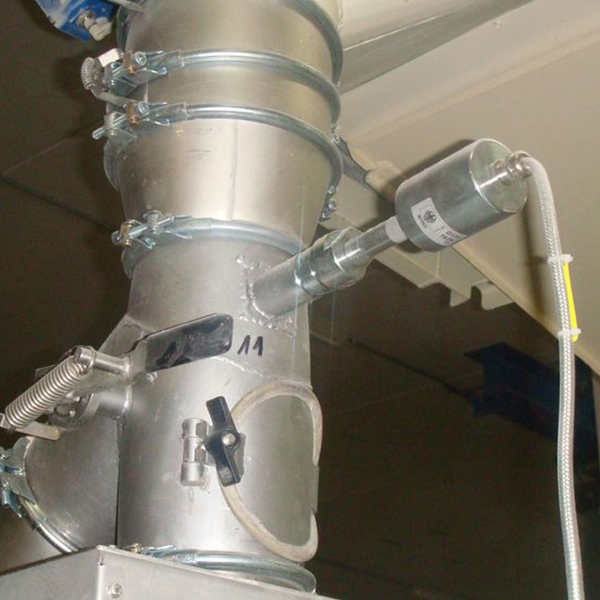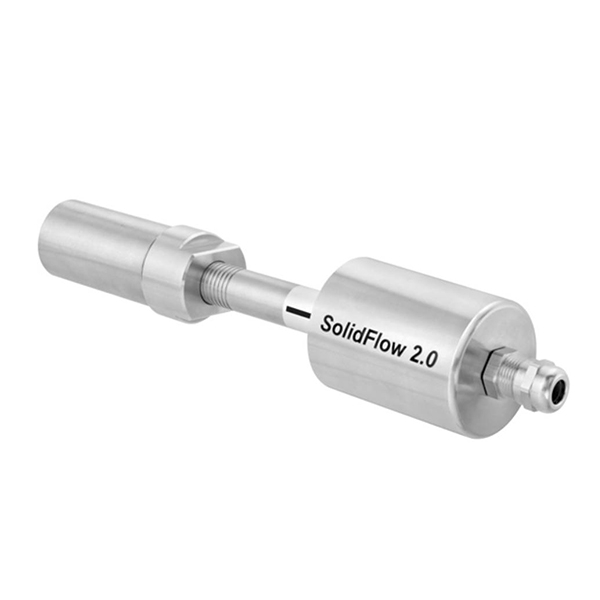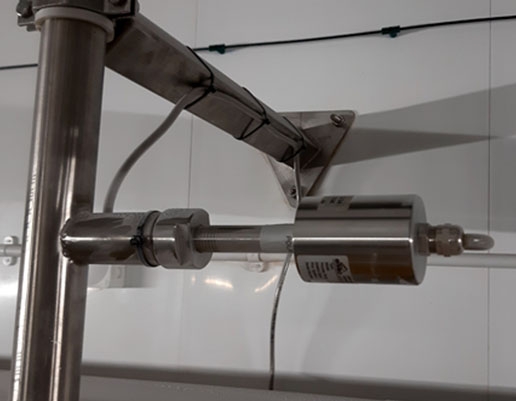Description
SolidFlow 2.0 accurately controls or measures the flow of solid materials for flow rates up to 20 t/h.
It provides continuous mass flow measurement of all types of dust, powder and granules. The SolidFlow is most effective in free fall and pneumatic conveying in a pipe with a diameter no wider than 800mm.
Microwave measurement technology means no installations are in the material stream.
SolidFlow 2.0 is a sensor purposely developed for measuring the flow rate of solids conveyed in metallic ducts.
It has successfully been tested for online measuring of:
- all types of dust, powder and granules
- grain size between 1 nm and 1 cm
- pneumatically conveyed materials or
- in free fall after mechanical conveying systems
- SolidFlow is wear-resistant, and the commissioning is very easy.
Watch Video
Where is the SolidFlow Most Effective?
Waste Incineration Plant
A waste incineration plant produces exhaust gases during the incineration process. These gases need to be cleaned.
Therefore, hearth furnace coke is used continuously and, if needed, lime hydrate. Both materials are stored in silos. The two materials are blown via a rotary valve from the silos into a conveying air flow and thereby reach the exhaust gas stream which they clean.
The SolidFlow 2.0 measures a continuous mass flow up to 20 t/h in freefall and in pneumatic conveying. The dosage of HFC into the exhaust air stream should take place automatically and depend on the remaining pollutant concentration.
The installed SolidFlow 2.0 measures the amount of HFC dosed by a screw conveyor and regulates its speed control. After the freefall, the HFC enters an injector, where it is transported by an airstream to the filter.
Benefits
- Avoidance of overdosing (cost reduction) or underdosing (non-compliance with specifications)
- Effective control of the material feed
- No installations in the flow
- Simple retrofitting option
Compounding Plant
Mixtures are created using the sandwich technique with a weighing container.
The existing weighing device was not designed for dosing small quantities of additional components, which meant that measured doses could not be reproduced.
Benefits: SolidFlow 2.0 enables the dosing of additional components to be reproduced and better balancing of the quantities used.
Fuel Delivery
In a boiler, dust is conveyed as fuel to the combustion chamber. As there is no information about the distribution of fuel quantities in the different supply lines, setting optimum combustion is not always possible
Benefits: Each supply line is monitored by a SolidFlow 2.0 system, and the supply of fuel quantities is regulated in each individual supply line.
This enables accurate and uniform distribution of fuel quantities which is an essential requirement for optimum combustion.
Quantity Balancing
The supply of materials to the grinding system is subject to significant fluctuations.
Benefits: With SolidFlow 2.0, the progress of the mass flow can be measured and documented.
If necessary, adjustments can be made. By measuring the coarse grain between the grinding system and the mill, the grinding quality can also be monitored.
Automatic Salt Dosing System in Food Manufacture
How was the process managed before?
Problem: In food manufacturing, to understand tolerance, a sample of product must be taken. It needs to be chilled and fragmented before testing. Prior, it took 1 hour before a result was given, meaning any deviation within the process was not detected straight away. Change was needed because the process was too slow.
Solution: By installing a SolidFlow, an in-line sensor, a trend of the salt flow is now instantaneous within the process control system. Process parameters are set within the control system to alarm if the salt flow is either above or below tolerance. As a result, this enables the operator to react to changes within the process quicker which maintains product consistency and quality.
Benefits
- Visibility of product addition
- Operator able to make adjustments quicker to maintain product consistency
- Avoidance of overdosing (cost reduction) or underdosing
- More consistent finished product
| TECHNICAL SPECIFICATIONS | ||
|---|---|---|
| Material to measure | Dust, powders or granulates max. grain size 20 mm | |
| Working principle | Microwave | |
| Process pressure | 1 bar, optional 10 bar | |
| Process temperature | +200°C, optional up to +900°C | |
| Mounting | Via process connection | |
| Type of Conveying | Pneumatic leanphase, vertical freefall after feeder | |
| Flow rates | Up to 20 t/h | |
| Pipe diameter | Max. 800mm | |
| ATEX rating | Category 1/2 | |
| Output | 4…20mA, Modbus, Profibus | |
Additional Information
| Weight | 3.8 kg |
|---|---|
| Brand |
Product Downloads
Talk with the Experts
Contact us - Our team of application specialists can assist you with system design, installation, maintenance, and repair. As a systems integrator, we provide end-to-end support to ensure your facility has a reliable and effective gas detection system in place.
Sign up for more information - For more information on protecting your staff from the dangers of gas leaks, sign up for our emails.







